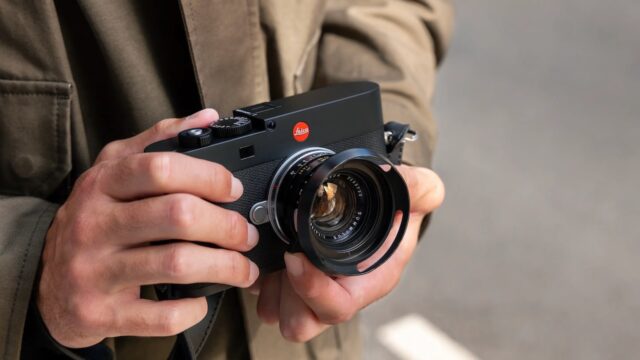Leica has unveiled the M EV1, the first M-Series camera to feature an integrated electronic viewfinder. It marks a major shift for the brand’s iconic range, known for its classic optical rangefinder design, which the new model has ditched entirely.
The M EV1 aims to bring the precision and feel of a traditional Leica, but with the added convenience of some more modern camera tech.
Its 5.76-megapixel EVF offers a real-time preview of exposure, colour, and depth of field, giving photographers a clear idea of their final shot before pressing the shutter.
Leica says this makes focusing easier for users with different visual acuity, especially when using its ultra-fast Summilux and Noctilux lenses at shallow depths of field.
While this is Leica’s first rangefinder-free M model, the company insists it still embodies the “soul” of the M-System.
It carries over the full-frame BSI-CMOS sensor and Maestro III processor from the M111, capable of shooting in 60, 36, or 18MP resolutions. Additionally, it features 64 GB of internal storage and an SD card slot.

Connectivity remains modern too, with Wi-Fi, Bluetooth, and support for the Leica FOTOS app for quick transfers. The camera even supports Content Credentials, embedding tamper-proof metadata to verify image authenticity, and it also includes focus peaking, zoom assist, and dioptre adjustment from -4 to +2.
Design-wise, it’s every bit a Leica. It is handmade in Germany with a refined leatherette finish and minimalist styling. Also, the diamond-pattern grip and purist front give it a distinct identity within the M lineup.
Still, purists may feel conflicted. The loss of the optical rangefinder, which is the defining feature of Leica’s M heritage, means the EV1 is more closely aligned with a mirrorless camera in spirit. For many, that’s a practical upgrade, but for others, it’s a departure from what makes a Leica, well, a Leica.
Leica M EV1 Price
The Leica M EV1 is available now for €7950, around £6800, with an optional matching hand grip priced at €395.
It’s undeniably beautiful and technically impressive, but it’s also the clearest sign yet that even Leica’s most traditional line is embracing a digital future.









